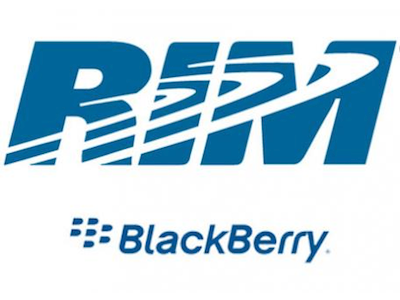Microsoft Licenses exFAT to Research In Motion
Microsoft said that it has entered a licensing agreement with Research in Motion that provides the company with the ability to integrate the latest Extended File Allocation Table (exFAT) for "certain Blackberry devices".
"Today's smartphones and tablets require the capacity to display richer images and data than traditional cellular phones," said David Kaefer, general manager of Intellectual Property Licensing at Microsoft, in a prepared statement. "This agreement with RIM highlights how a modern file system, such as exFAT can help directly address the specific needs of customers in the mobile industry."
exFAT, developed as a file system specifically for flash memory devices, is used as a successor for FAT in all scenarios where NTFS does not make much sense. Versus FAT, exFAT extends the maximum file size a flash memory device can work with by a factor of five, as well as an increase of storage capacity support from 32 GB to 256 TB. In a single directory, exFAT can handle up to 2,796,202 individual files.
At this time, exFAT is supported by Windows XP SP2 (with exFAT patch upgrade) and above, as well as Mac OS X 10.6.6 and above.
Microsoft said that it has entered into similar licensing agreements with companies such as Panasonic, Sanyo, Sony and Canon.
Contact Us for News Tips, Corrections and Feedback
Get Tom's Hardware's best news and in-depth reviews, straight to your inbox.

Wolfgang Gruener is an experienced professional in digital strategy and content, specializing in web strategy, content architecture, user experience, and applying AI in content operations within the insurtech industry. His previous roles include Director, Digital Strategy and Content Experience at American Eagle, Managing Editor at TG Daily, and contributing to publications like Tom's Guide and Tom's Hardware.
-
tokencode RIM should be licensing Windows Phone OS, not just a file system.... in a few more years blackberry will simple mean fruit again...Reply -
nieur tokencodeRIM should be licensing Windows Phone OS, not just a file system.... in a few more years blackberry will simple mean fruit again...Reply
hoping in a few more years Apple will simply mean fruit again
-
puddleglum ZingamHow about a license free file system for flash devices????You could always go with ext2 or one of its derivatives/Reply
-
ddpruitt WTF??? This is why RIM is in trouble. FAT (and by extension it's derivatives) is waaay to inefficient for storage on large devices. Figure you're losing 10-15% of the drives space just to figure store the tables (that's why your SD cards always show such smaller than advertised capacity). Modern??? It was designed 30+ years ago!!Reply -
Northwestern ddpruittWTF??? This is why RIM is in trouble. FAT (and by extension it's derivatives) is waaay to inefficient for storage on large devices. Figure you're losing 10-15% of the drives space just to figure store the tables (that's why your SD cards always show such smaller than advertised capacity). Modern??? It was designed 30+ years ago!!FAT =/= exFATReply
-
samkl ddpruittWTF??? This is why RIM is in trouble. FAT (and by extension it's derivatives) is waaay to inefficient for storage on large devices. Figure you're losing 10-15% of the drives space just to figure store the tables (that's why your SD cards always show such smaller than advertised capacity). Modern??? It was designed 30+ years ago!!Reply
SD cards show less space because of bit/byte conversions.
-
ddpruitt Reply
exFAT is FAT with extensions added to it for larger files and metadata. It's only used in low power devices because it's less computationally expensive. It's not used in any other medium because it uses several times more space than any other modern filesystem. Read the literature first before you comment.9405364 said:FAT =/= exFAT
9405376 said:SD cards show less space because of bit/byte conversions.
If that were so then they would show more, not less space. Flash memory capacities are 2^x vs hard-disks that are 10^x, which is why they show less space. Doesn't apply here.
-
Camikazi ddpruittFlash memory capacities are 2^x vs hard-disks that are 10^x, which is why they show less space. Doesn't apply here.From what I see flash drives are numbered based on base 10 just like HDDs, every flash drive I have formats with the exact amount of space as a GB would be in GiB.Reply
